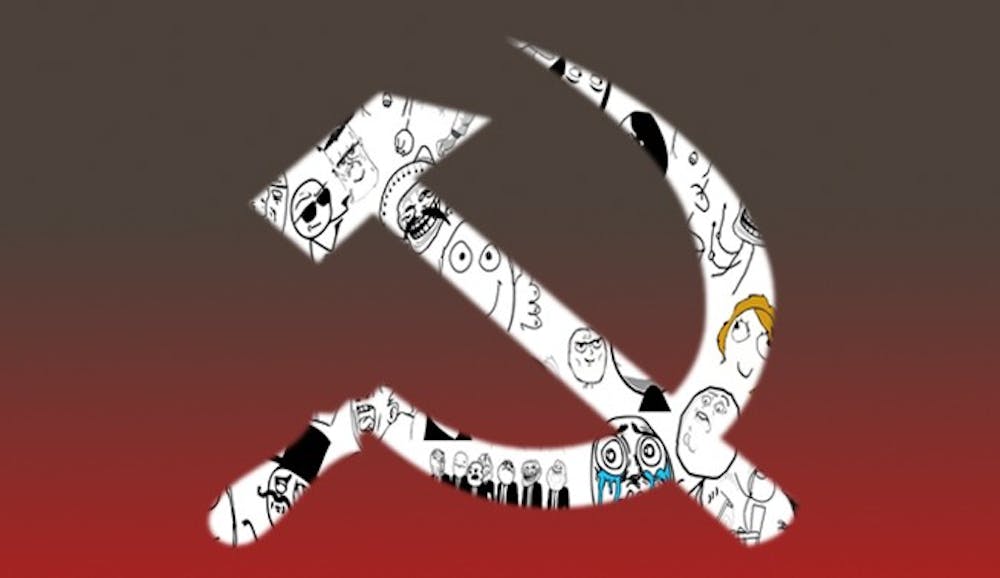In the past several years, there has been a shockingly casual wave of Soviet fetishism among the educated left. The hammer and sickle, images of Lenin and Stalin in shades of blood red, or whatever other trending Soviet meme are shared with a chilling lightheartedness that is divorced from both history and current events.“Sassy Socialist Memes," which despite its potentially benign name often emphasizes Soviet themes, has well over a million Facebook followers. If you’re a member of any meme group, its hard to escape this flavor of memes.
Sure, you can be a socialist. You can even be a communist. You can just be amenable to the ideas brought up by either ideological tradition. But, the problem with symbols is that they are infrequently nuanced; they have no add-on qualifiers or asterisks pointing to a disclaimer — despite the best efforts of the owners of confederate flags.
And yet, we, the college kids of America in 2018, have suspended judgment of a primary symbol of the USSR, one of the bloodiest empires of the last five hundred years.
But these memes are satiric, right? Satire is a delicate art, much more than a few pithy jabs. Malcolm Gladwell outlined this complexity on an episode of Revisionist History. A particular amount of ambiguity is required for satire to succeed, allowing the reader to conclude on their own what the author intends. Too much ambiguity, and you may as well write the inverse of what you wanted to say.
Memes, measured in sheer outrageousness and shares, are not too different from fake news. What makes memes so shareable is a level of ambiguity that allows them to be all things to all people — satire that somehow appeals to everyone. Look at a meme about Stalin, and you can assume a whole host of different meanings depending on your background. Hilarious rib at a failed system? Macabre reminder of the sex appeal of evil? Clever one-liner to remember a clever old man misremembered by history?
As a society we have decided that swastikas are unacceptable, so why the trendy resurgence of the hammer and sickle? These memes are normalizing a romanticization of the USSR at a time when there is good reason to believe that Russia is a threat to the most deeply held principles of American democracy.
It’s hard to imagine that, having mastered fake news in the election, the Russian troll farms wouldn’t use this opportunity to sow more division. But whether or not the Russians have their hands in the nostalgic USSR memes, they are working definitively in the favor of a hostile foreign power.
Seems like that shouldn’t be fashionable.
To get the day's news and headlines in your inbox each morning, sign up for our email newsletters.






